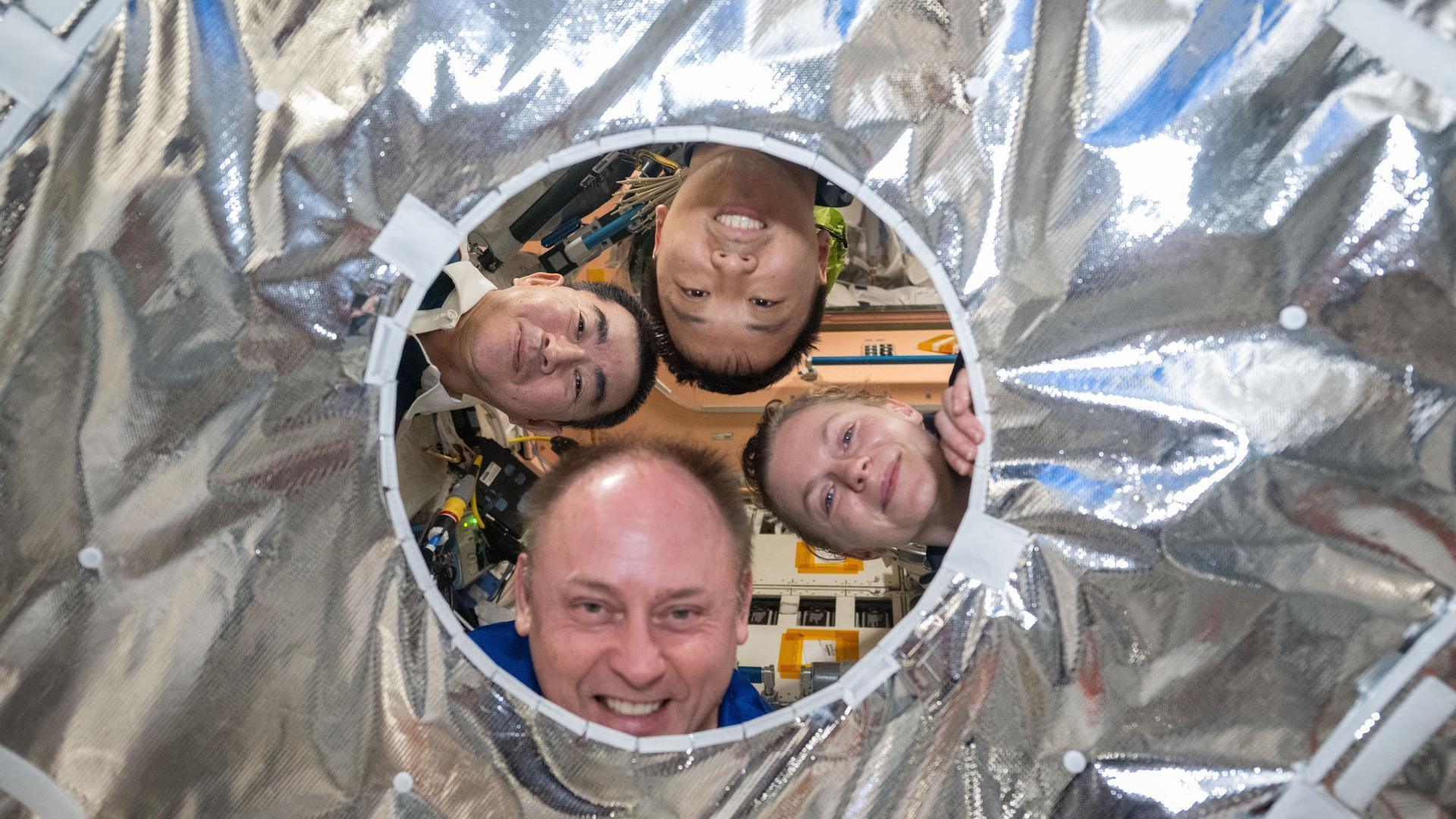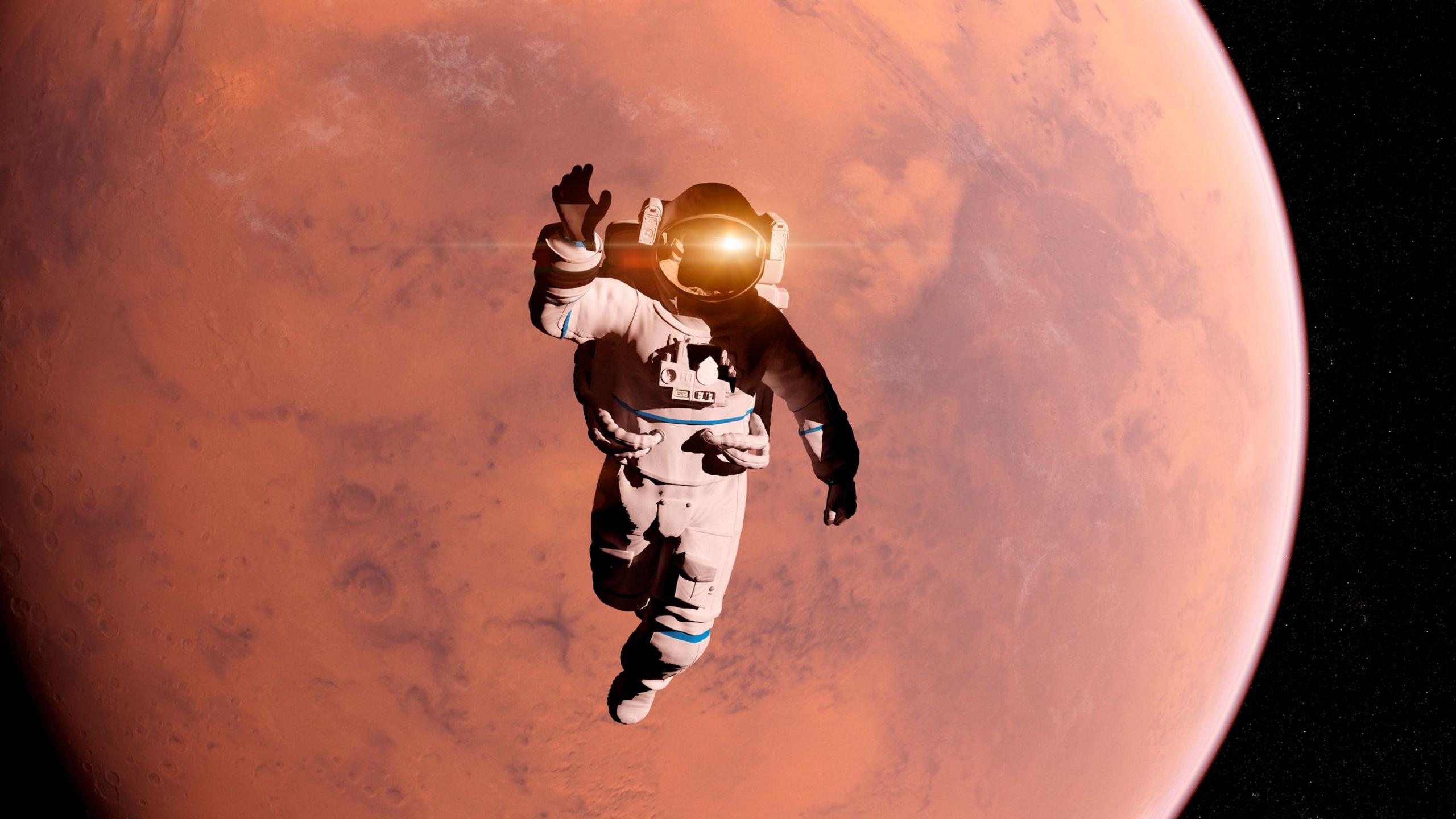Why being in space could be bad for your eyesight

Astronauts on the ISS are doing experiments to try to find a solution
- Published
Astronauts on the International Space Station (ISS) have been carrying out some unusual research this week - on their eyes.
US space agency Nasa are hoping that research can help to find a way to protect astronauts against a condition that affects their eyes in space.
It's been called spaceflight-associated neuro-ocular syndrome (SANS), and the symptoms include flattening towards the back of the eyeball and swelling in the area behind this.
It can also cause wrinkles at the back of the retina and changes to how the eye focuses.
Nasa aims to send people to Mars in the next 15 years and wants to figure out why SANS happens, how to prevent it and how to protect space travellers from long-term sight problems.
Nasa reveals new astronauts for Moon and Mars missions
- Published23 September
Mars mission crew member answers YOUR questions
- Published17 September 2024

Although medical experts have known about SANS for more than a decade, researchers haven't been able to find out exactly what causes it, or how to prevent or treat it.
They also aren't sure how long it takes to develop, with some changes detected in astronauts eyes after as few as ten days in space.
Most of the people who have shown signs of SANS are those working on the International Space Station (ISS) for six-month stints.

Many of the people reporting signs of SANS had worked on the International Space Station
Doctors think that the risk increases as more time is spent in microgravity.
This means the risk would be higher on a Mars mission, which is around nine months in each direction.
Not everyone who goes into space develops SANS, and and while most of the changes associated with SANS seem to resolve after returning to Earth, there are concerns that if they are exposed for a longer time there could be more permanent damage.
What causes the eye problems?
The team previously thought one of the causes could be that more fluid than usual collects in the head when someone is in microgravity, compared to on Earth when gravity pulls it down towards our feet.
But they don't think this alone would be enough to cause dramatic changes, and it doesn't explain why the problems affect some astronauts and not others.

Microgravity is the condition in which people or objects appear to be weightless, as seen when astronauts and objects float in space
So some of Nasa's astronauts on the ISS have recently been testing out a special thigh cuff designed pull fluids toward the lower body and keep them there, reducing pressure on the brain and eyes.
Other causes for SANS could be an increase in air pressure, changes to activity in the cells, or high levels of carbon dioxide.
Researchers are hoping the more time they can spend looking into these factors, the closer they can get to finding a solution to be able to help protect astronauts in the future.
